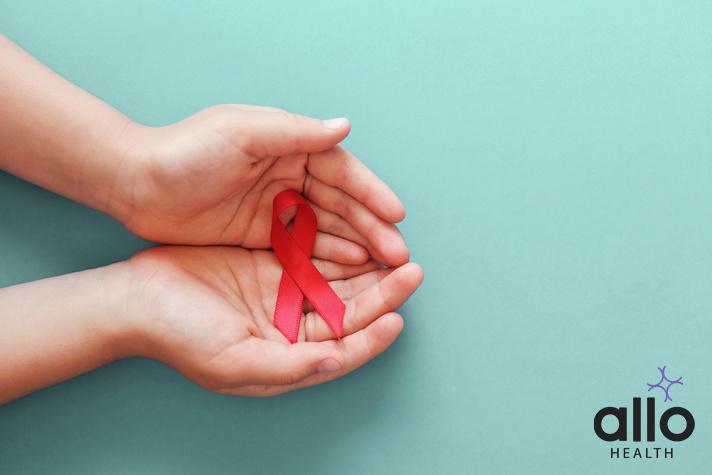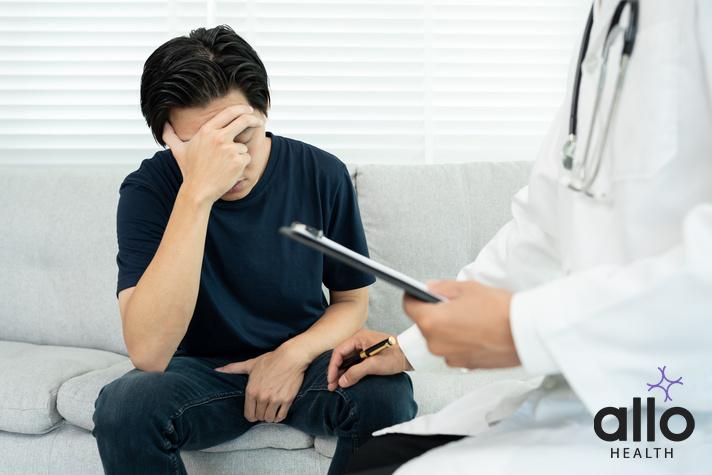What Are The Symptoms And Complications Of Trichomoniasis?

Allo Health is dedicated to personalized well-being, offering support and trusted information tailored to individual health goals. The platform emphasizes human-generated content, led by a distinguished medical team of experts, including physicians and sexual health specialists. Their commitment to credibility involves rigorous fact-checking, authoritative research, and continuous updates to ensure accurate, up-to-date information. Allo Health's unique approach goes beyond conventional platforms, providing expert-led insights and a continuous commitment to excellence, with user feedback playing a crucial role in shaping the platform's authoritative voice.

Dr Sanina Mansoor holds MBBS degree from Yenepoya university,Mangalore.She has 8 years of experience working as a medical officer at various health centres and medical colleges.
Why This Was Upated?
Our experts continually monitor the health and wellness space, and we update our articles when new information became available.
Updated on 26 February, 2025
- Article was updated as part of our commitment to diversity, equity, and inclusion.
"The following blog article provides general information and insights on various topics. However, it is important to note that the information presented is not intended as professional advice in any specific field or area. The content of this blog is for general educational and informational purposes only.
Book consultation
The content should not be interpreted as endorsement, recommendation, or guarantee of any product, service, or information mentioned. Readers are solely responsible for the decisions and actions they take based on the information provided in this blog. It is essential to exercise individual judgment, critical thinking, and personal responsibility when applying or implementing any information or suggestions discussed in the blog."
Trichomoniasis, caused by the protozoan parasite Trichomonas vaginalis, is a prevalent sexually transmitted infection (STI) worldwide. Despite its widespread occurrence, there remains a lack of awareness about its symptoms, potential complications, and treatment options. In this comprehensive article, we delve into the nuanced aspects of trichomoniasis, shedding light on its symptoms, associated complications, and the importance of prompt diagnosis and treatment.
Trichomoniasis: An Overview
Trichomoniasis primarily spreads through sexual contact, including vaginal, anal, or oral intercourse. The parasite Trichomonas vaginalis thrives in warm, moist environments, making genital areas an ideal breeding ground. While sexual transmission is the most common mode of infection, trichomoniasis can also spread through non-sexual means, such as sharing contaminated objects like towels or bathing suits.
Symptoms of Trichomoniasis
Trichomoniasis can manifest with a spectrum of symptoms, although a significant portion of infected individuals may remain asymptomatic. For those who do experience symptoms, the manifestations can vary in intensity and presentation:
- Genital Discharge: One of the hallmark symptoms of trichomoniasis is abnormal genital discharge. Both men and women may notice an increase in vaginal or penile discharge, which may vary in color (commonly green, yellow, or white) and consistency (often described as foamy or frothy). The discharge may have a distinct odor and may become more pronounced over time.
- Genital Itching or Irritation: Trichomoniasis can cause itching or irritation in the genital area, ranging from mild discomfort to severe itching. This sensation can interfere with daily activities and may exacerbate during periods of increased moisture or friction.
- Pain or Discomfort During Urination: Individuals with trichomoniasis may experience pain or discomfort while urinating, often described as a burning sensation. This symptom may be particularly noticeable in women, especially during menstruation or urination following sexual intercourse.
- Pain During Sexual Intercourse: Trichomoniasis can lead to dyspareunia, characterized by pain or discomfort during sexual intercourse. The inflammation and irritation of the genital tissues can make sexual activity uncomfortable or even painful for affected individuals.
- Lower Abdominal Pain: In some cases, trichomoniasis may cause lower abdominal pain or discomfort, resembling menstrual cramps. While more commonly reported in women, men may also experience abdominal discomfort associated with trichomoniasis.
- Swelling of the Genital Area: Severe cases of trichomoniasis may lead to swelling or inflammation of the genital area, including the vulva, vagina, penis, or urethra. This swelling may be accompanied by redness, tenderness, and warmth in the affected area.

Complications of Trichomoniasis
Beyond the Basics While trichomoniasis is often considered a benign infection, untreated cases can lead to various complications, particularly in women:
- Increased Risk of HIV Transmission: Trichomoniasis has been associated with an increased risk of HIV transmission. The inflammation and genital lesions caused by trichomoniasis can facilitate the entry and spread of the HIV virus, making individuals with trichomoniasis more susceptible to HIV infection.
- Pelvic Inflammatory Disease (PID): Untreated trichomoniasis can progress to pelvic inflammatory disease (PID) in women, a serious condition characterized by inflammation and infection of the upper reproductive organs, including the uterus, fallopian tubes, and ovaries. PID can lead to long-term complications such as infertility, chronic pelvic pain, and ectopic pregnancy.
- Adverse Pregnancy Outcomes: Pregnant women with trichomoniasis are at an increased risk of adverse pregnancy outcomes, including preterm birth and delivering a low birth weight baby. The infection can lead to inflammation of the cervix and uterus, which may trigger early labor or interfere with fetal development.
- Prostatitis and Epididymitis: In men, untreated trichomoniasis can lead to inflammation of the prostate gland (prostatitis) or the epididymis (epididymitis). These conditions can cause pain, discomfort, and urinary symptoms, necessitating medical treatment to alleviate symptoms and prevent complications.
- Increased Risk of Other STIs: Trichomoniasis can increase the risk of acquiring other sexually transmitted infections (STIs), including gonorrhea, chlamydia, and syphilis. The inflammation and disruption of the genital mucosa caused by trichomoniasis can create entry points for other pathogens, leading to co-infections and more severe health consequences.
Treatment of Trichomoniasis
Fortunately, trichomoniasis is easily treatable with prescription medications, typically antibiotics such as metronidazole or tinidazole. These medications work by killing the parasite and clearing the infection from the body. It’s crucial to complete the full course of antibiotics as prescribed, even if symptoms improve before finishing the medication.
In addition to treating the infected individual, healthcare providers may recommend that their sexual partners also undergo testing and treatment to prevent reinfection and further transmission of the parasite. Abstaining from sexual activity until both partners have completed treatment can help prevent the spread of trichomoniasis.

Trichomoniasis, caused by the protozoan parasite Trichomonas vaginalis, is a prevalent sexually transmitted infection with a wide spectrum of symptoms and potential complications. While prompt diagnosis and treatment are essential for managing trichomoniasis and preventing further transmission, many cases go undetected due to the lack of awareness about the infection. By understanding the symptoms, complications, and treatment options associated with trichomoniasis, individuals can take proactive steps to protect their sexual health and well-being.








































